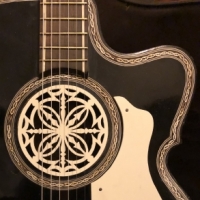DjangoBooks.com
Welcome to our Community!
Categories
- 17.9K All Categories
- 394 General
- 255 Welcome
- 10 Archtop Eddy's Corner
- 74 CD, DVD, and Concert Reviews
- 29 FAQ
- 9 Gypsy Jazz Italia
- 17 Photos
- 24 Gypsy Picking
- 3 Unaccompanied Django
- 1 Pearl Django Play-Along Vol.1
- 1 Gypsy Fire
- 21 Gypsy Rhythm
- 551 Gypsy Jazz University - Get Educated
- 104 Gypsy Jazz 101
- 175 Repertoire
- 128 History
- 88 Technique
- 39 Licks and Patterns
- Daniel Givone Manouche Guitare Method Users Group
- 17 Eddie Lang Club
- 996 Gypsy Jazz Gear
- 645 Guitars, Strings, Picks, Amps, Pickups and Other Accessories
- 315 Classifieds
- 36 Recording
- 38 Other Instruments
- 17 Violin
- 3 Mandolin
- 6 Accordion
- 3 Bass
- 9 Woodwinds
- 197 Gypsy Jazz Events
- 78 North America
- 81 Europe
- 38 International
In this Discussion
Which Guitars are Most Stable With Humidity Changes?
Just curious about people's experiences with GJ guitars and humidity changes. Which guitars seem to be the most stable, in terms of action and feel, despite changes in humididy (due to weather, heating, air conditioning, etc.)?
Are high-end guitars more fussy, changing all the time? Are entry-level guitars more stable (built heavier)? Or are some makers just better at reducing the tendency of their guitars to change shape with humidity changes?
Do some guitars seem always to feel and sound the same, while other guitars feel and sound different every time you pick them up? Do some guitars require shimming and de-shimming frequently (even in the middle of a gig), or truss rod adjustment, while others are as stable as, say, a Martin flattop?
Are high-end guitars more fussy, changing all the time? Are entry-level guitars more stable (built heavier)? Or are some makers just better at reducing the tendency of their guitars to change shape with humidity changes?
Do some guitars seem always to feel and sound the same, while other guitars feel and sound different every time you pick them up? Do some guitars require shimming and de-shimming frequently (even in the middle of a gig), or truss rod adjustment, while others are as stable as, say, a Martin flattop?










Comments
"It's a great feeling to be dealing with material which is better than yourself, that you know you can never live up to."
-- Orson Welles